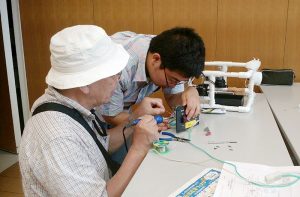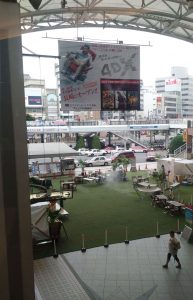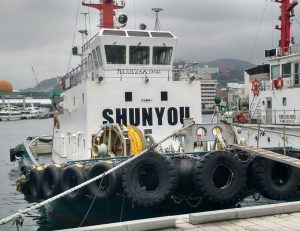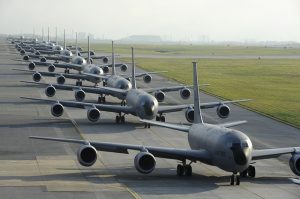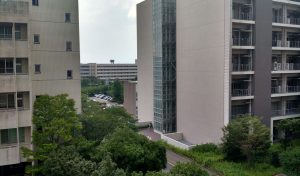 So, I’ve been here a week now. I’ve done a lot of settling in, a certain amount of figuring out systems, a decent bit of useful work, and a little tourism.
So, I’ve been here a week now. I’ve done a lot of settling in, a certain amount of figuring out systems, a decent bit of useful work, and a little tourism.
I’m on a small campus here which consists almost entirely of research institutes – so there’s little or no undergraduate teaching. In that respect it’s a little like home… except that “a small campus” here means around 100-200 academic staff, still an order of magnitude greater than Orkney! The first thing I noticed when I arrived was that the campus is noisy, and not from anything man-made: trees and bushes here are loud, filled with cicadas (or similar. I’m no biologist). In summer in Kyushu, you can hear green space coming! Beyond that it’s fairly ordinary university-campus buildings, although the presence of the QUEST experiment is rather cool.
I was told before I came that “the language of the lab is English”. It’s interesting to see what that means. It means that the staff can speak English, and any foreign students use English as a mutual language. The Japanese masters students understandably avoid it as much as they can, except when forced to use it in occasional meetings and presentations. It’s brought home to me something that I’d thought about before: what an advantage people from English-speaking countries have from the start as they go into academia. For the Japanese students here, use of English is a prerequisite for an academic career, and becoming proficient is an extra burden on top of their subject-related study and their research.
[wc_box color=”secondary” text_align=”left”]
Tourism count so far
Temples: 3
Castles: 1 (ruined)
Museums: 2
[/wc_box]

